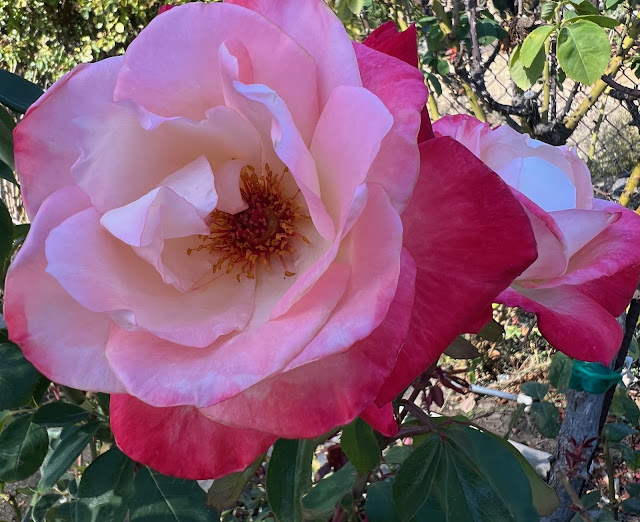Jostling inside one of the old streetcars that rumble and clang down San Francisco's Embarcadero, we viewed the rebirth of tourist season in our town. We saw lines of people waiting for the Alcatraz ferry, lines for lunch at the Ferry Building, and groups of people walking to Oracle Park for a ballgame.
As a native Californian, I am aware of the fascination with California. One set of grandparents came west from Elmira, New York, during the 1920s. My dad and some friends drove across the Plains from Minnesota on their way to jobs at Disney Studios at the end of the 1930s. Bill's family started in Newport News, Virginia, with lengthy stops in Cincinnati, Ohio, and Decatur, Illinois, finally arriving in Los Altos, California, during his high school years. All of us, immigrants from somewhere else.
Sunset Magazine, first published at the beginning of the 20th Century by the Sunset Railroad, enticed people to come. The magazine showcased the different cultures that had influenced California's lifestyle. The magazine filled its pages with California artists such as Dong Kingman, Earl Thollander, and Millard Sheets, homes designed by Clifford May and Joseph Eichler, and recipes that fit California's outdoor life. Sunset created covers advertising the state, using design elements similar to those found in the paintings and prints of Henri de Toulouse-Lautrec. Bold colors, large areas of open space, and strong outlines of shapes made the West appealing to many. Because outdoor living was central to California, Sunset created ideas and books that catered to western gardens. We purchased our first home and depended on the Sunset Western Garden Book for inspiration and advice.
When we moved to a high-rise in San Francisco, I finally gave away our gardening book. Like a recipe book, it was filled with notes and scraps of paper with ideas for a garden. In our new home, we have no place to plant; instead, we look down on the tops of Japanese maples, cherry trees, and the greenery that is taken care of by others. A circular fountain stands in the middle of the driveway leading to our building. We are tempted to drop a few goldfish into the fountain, but restrain ourselves. We've discovered that the plantings around our building change with the seasons. The trees change color and drop their leaves in autumn. The first camellias bloom at the beginning of winter. The azaleas and Pacific Coast iris appear early in the spring. And roses surround the island in the middle of the fountain as summer advances.
Traveling has been off our list while we spent two years moving from one place to another. But California does have its charms, even for a native, and we've decided to spend our time exploring more of the places we haven't seen in the state.
California has been the subject or setting for many books. Writers as different as Bret Harte and the poet Charles Bukowski created work influenced by their time in California. The non-fiction books that I've posted here are all meant to be read and savored in short doses. Rebecca Solnit dissects the layers of San Francisco, and John King, the former architecture reporter for the SF Chronicle, tells the story of the rise, fall, and resurgence of the Ferry Building. Sylvia Linsteadt writes about hidden places in the Bay Area. California Calls You and Back Roads of California are filled with rich illustrations of the beauty and allure of California.
Check out this California state website for a list of books written by Californians:
https://www.library.ca.gov/wp-content/uploads/2021/08/ClassicsByCaliforniaAuthors.pdf




.jpeg)
.jpeg)
.jpeg)

.jpeg)





.jpeg)
.jpeg)


.jpeg)




.jpeg)
.jpeg)
.jpeg)

.jpeg)
.jpeg)
.jpeg)